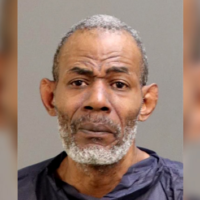
(LOS ANGELES) — Helen Jones has been searching for answers since her son died in 2009 while in custody at the Twin Towers Correctional Facility in Los Angeles.
Jones said she was initially told by law enforcement that her 22-year-old son, John Horton, had died by suicide, but a forensic pathologist from the medical examiner’s office showed her that Horton’s medical report included evidence of physical trauma.
Jones filed a wrongful death lawsuit in 2015. The case was settled in 2016, and Jones was paid $2 million by Los Angeles County. She is currently trying to get a murder case reopened, according to her lawyer Dennis Wilson.
Horton’s autopsy report currently states suicide as well as “undetermined factors” for cause of death, following an additional investigation by the coroner performing the autopsy.
“He didn’t die from natural causes,” Jones told ABC News Prime’s Morgan Norwood. “He didn’t take his own life. His life was stolen.”
The death of George Floyd in May 2020, which was eventually ruled a homicide, has cast the profession of medical examiners into the spotlight as differing autopsy reports and allegations of racial bias prompted a prolonged debate among members of the profession.
Researchers say there are long-standing flaws in the “science of death,” that disproportionately impact Black and Latinx inmates.
In a report published earlier last month by two labs at UCLA, the Carceral Ecologies Lab and the BioCritical Studies Lab, researchers reviewed the autopsies in 59 cases of death in Los Angeles County jails between 2009 and 2019. Of those, 26 “natural death” cases that were reviewed, 65% were Black and 23% were Latinx.
They found that 85% of the “natural death” cases involved inmates with an alleged history of mental illness and more than half included evidence of “physical violence on the body.”
The alleged mental illness ranged from medical histories of depression or schizophrenia to officials noting that the inmate demonstrated mental confusion or aggressive behavior, according to lead researcher on the study Dr. Terence Keel.
The study, the researchers write, “shows that the majority of Black and Latinx men are not dying from “natural causes,” but from the actions of jail deputies and carceral staff.”
They draw this conclusion based on the presence of evidence of physical violence on the body, as well as the fact that the inmates’ alleged mental illness could have been a precipitating event or factor.
In John Horton’s case, it was the evidence of physical violence on his body that led his mother to file the lawsuit.
Yet another factor researchers assert is the intertwinement of law enforcement and forensic science.
The UCLA researchers found that law enforcement officials were present during the autopsies of 51 of the 59 cases they reviewed. (The Los Angeles County Department of Medical Examiner-Coroner disputed in a statement that it withheld other autopsies requested by the researchers.)
“These are either detectives from the sheriff’s department or officers themselves that are in the room during the effort to actually do the autopsy and we see this as a conflict of interest,” Keel told ABC News.
The Los Angeles County Department of Medical Examiner-Coroner also disputed this allegation in their statement, writing that “the allegation that DMEC and its personnel are unduly influenced by the Los Angeles County Sheriff’s Department is false.”
“The DMEC is separate from any law enforcement agency in the county and exercises its own independent judgment when conducting death investigations and concluding the cause and manner of death without any influence from other agencies.”
The Los Angeles County Sheriff’s Department said in a statement to ABC News that “LASD does not make determinations on manner and cause of death but does conduct extensive internal inquiries into every death which happens within one of its jail facilities.”
Los Angeles is one of 10 counties in California in which the coroner’s office and sheriff’s office are separate. A new bill waiting to be considered by the California State Senate would separate the medical examiner’s office from the sheriff’s office in the remaining 48 counties.
“The best system of death investigation is one in which medical examiners and coroners are independent from law enforcement,” Dr. Kathryn Pinneri, the president of the National Association of Medical Examiners, told ABC News.”I personally would support the separation of medical examiners/coroners from law enforcement in any jurisdiction.”
Another bill, AB-2761, waiting to be considered by the California State Senate would require a death certificate to state whether the person died in law enforcement custody and whether it was at the hands of law enforcement officials.
“California is one of the few states that allow the coroner’s duties to be combined with the sheriff’s duties,” the fact sheet for AB-2761 states. “This presents a potential conflict of interest, particularly when a coroner is tasked with investigating a death that occurred at the hands of law enforcement in custody.”
A study released last year in the scientific journal The Lancet found that 55% of fatal encounters with the police between 1980 and 2018 were misclassified in the U.S. National Vital Statistics System. Misclassified in this context means the cause of death was recorded incorrectly. The study cross-referenced the National Vital Statistics System with three crowd-sourced databases which record police violence.
The margins were noticeably higher in deaths of non-Hispanic Black people, with a misclassification rate of 59.5%.
“AB 2761 would ensure greater transparency in the recording of death when it occurs at the hands of public safety officials,” the bill’s fact-sheet states.
Some researchers have also found racial bias among medical examiners which may impact the results of autopsy reports.
A study published last year examined the question of racial bias in medical examiners by evaluating two sets of data. First, they looked at 10 years of death certificates for children under 12 in Nevada, in which the cause of death was “unnatural“ and characterized as either accidental or homicide. They found that forensic pathologists, which in some states are interchangeable with medical examiners, more frequently ruled in those cases that the cause of death was “homicide” versus “accident” in Black children compared to white children.
The researchers, who published the study in the peer-reviewed publication Journal of Forensic Sciences, also conducted an “experimental” survey of more than 100 medical examiners. They found that examiners, who were given identical medical information about a child’s death yet different contextual clues to their race, were five times more likely to rule the cause of death as a “homicide” versus an “accident” when told the child was African-American and that the primary caretaker was the mother’s boyfriend.
“Even highly trained professional scientists can be biased in their decisions” and the cognitive bias can emerge from context such as the race of the child, the researchers concluded from evaluating both the death certificate and experimental survey data.
Copyright © 2022, ABC Audio. All rights reserved.















